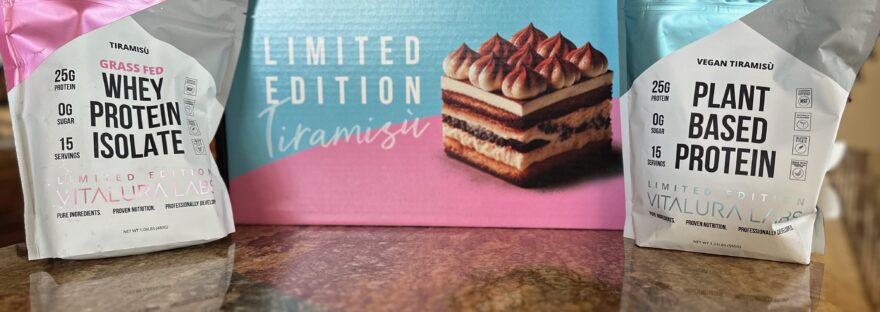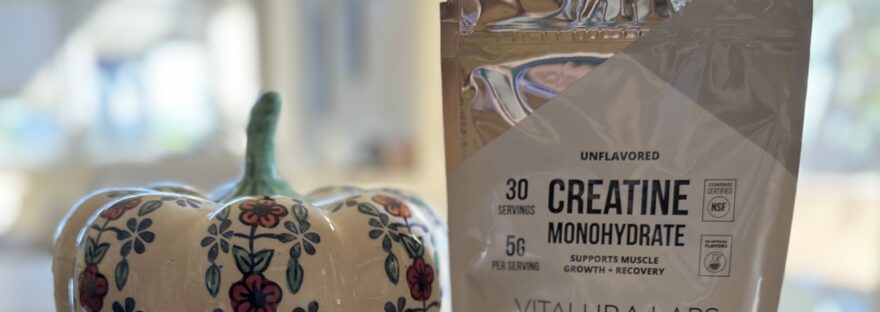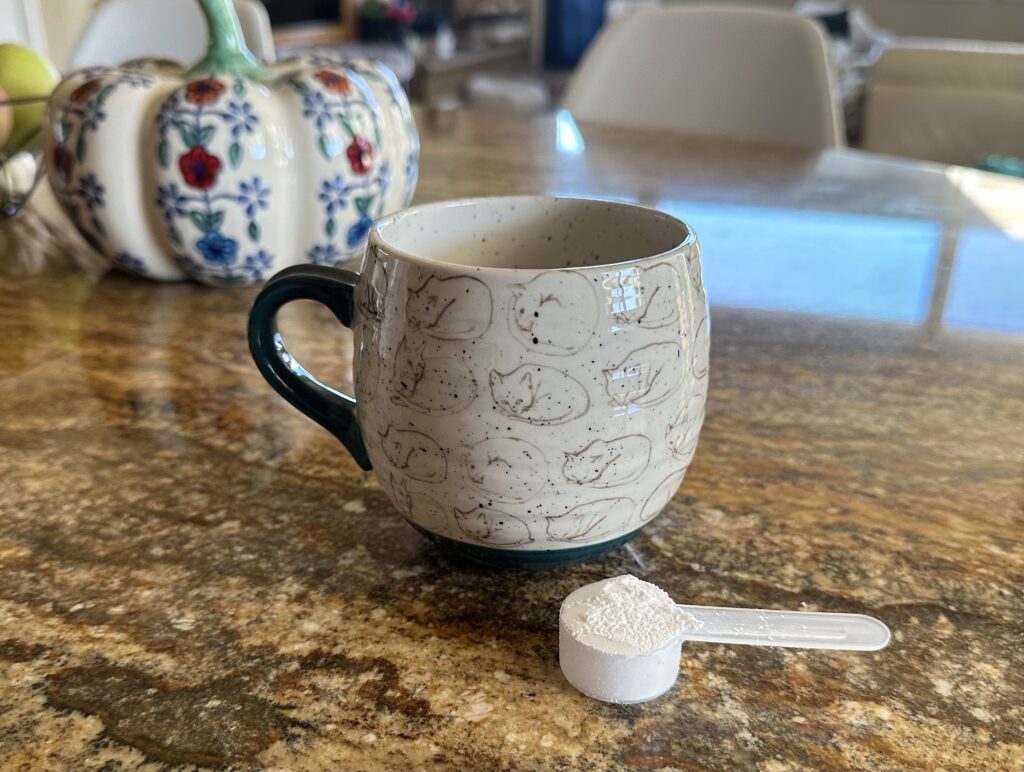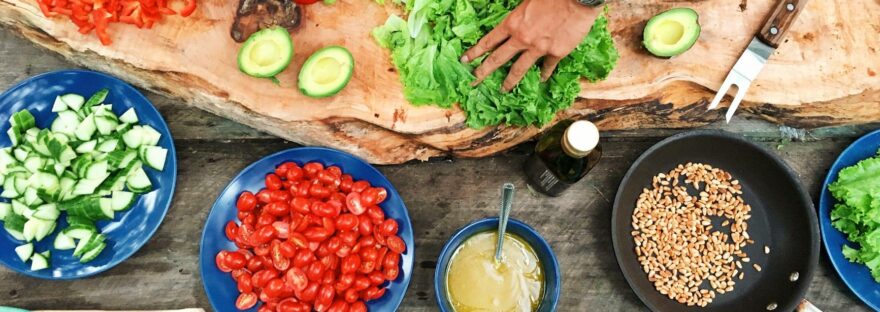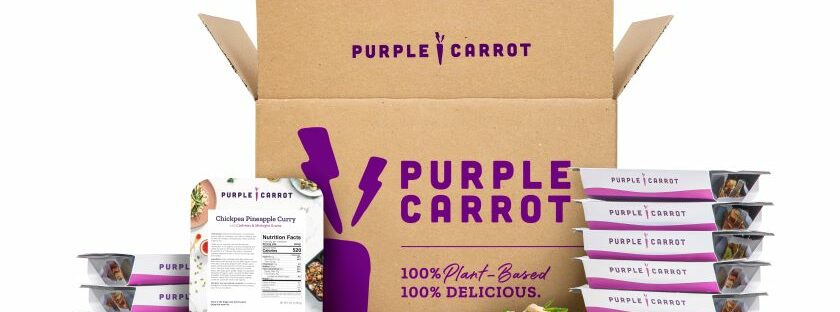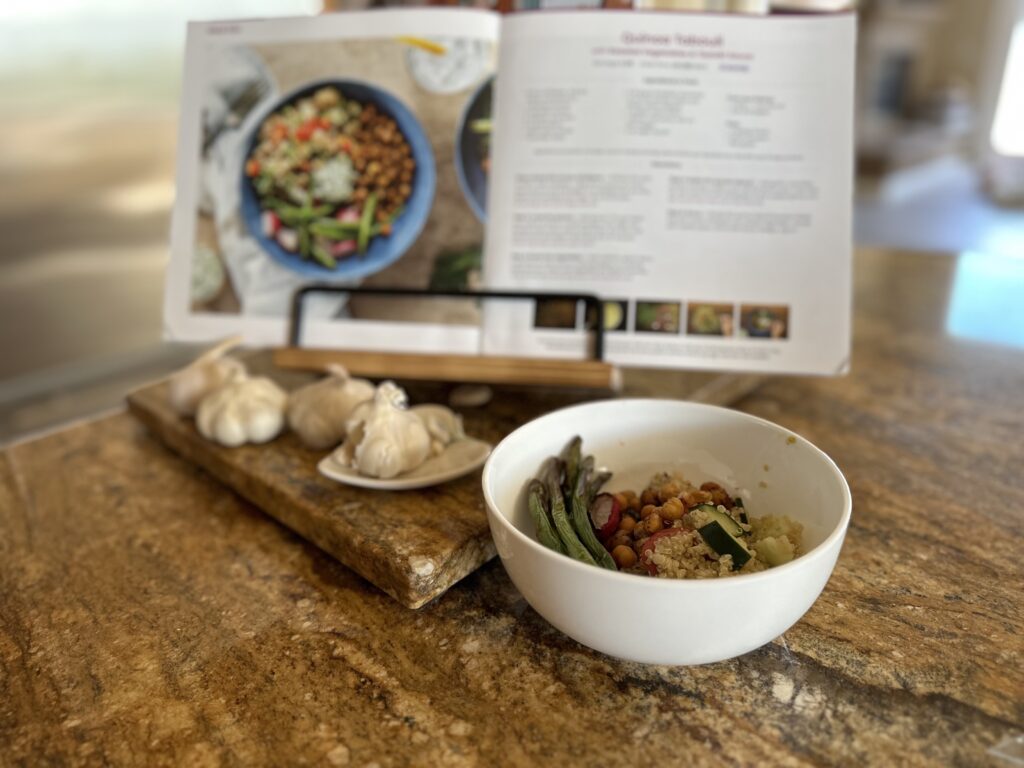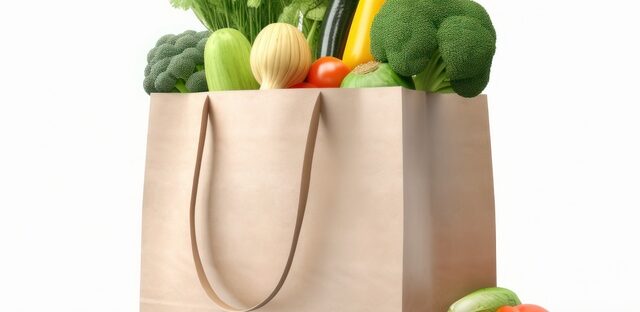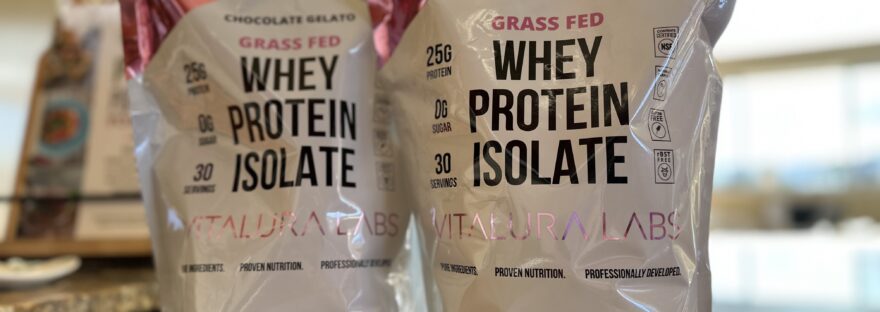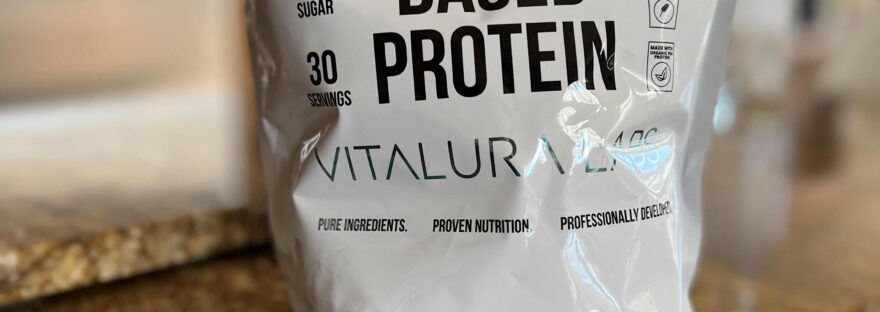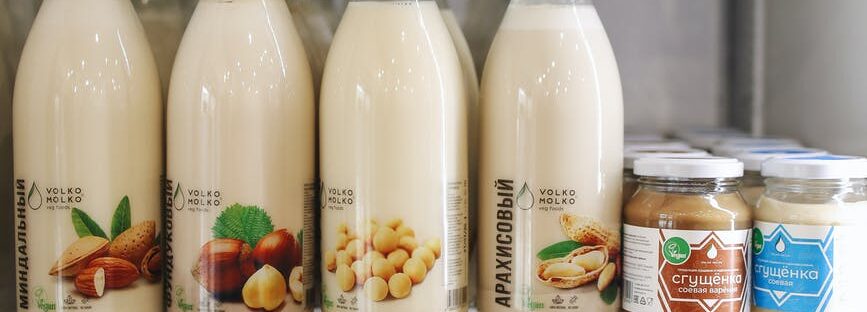The product in this review was gifted to me by Vitalura Labs. My professional opinion and analysis in this article are my own.
Vitalura Labs is the new kid on the block in the protein supplement world, but they are definitely here to stay. Their plant-based vanilla gelato flavor is, in my professional opinion, one of the best on the market. So when they reached out to me about their new whey protein powder, I couldn’t wait to try it even though it’s not vegan.
If you are vegan, you can read my previous review of their vegan protein powder.
Yes, I identify as vegan but…
The Registered Dietitian side of me recognizes that not everyone can or has an interest in following a vegan or plant-based only diet. For that reason I like to stay informed about non-vegan products in addition to vegan products. Honestly, how is anyone supposed to know what’s out there on the market if they aren’t checking for it or reading about it? This is true for Dietitians, too. Staying informed helps me better serve my clients, no matter where they are in their health journey.
As a Registered Dietitian I also recognize that not every product is of high quality. There are oodles of supplements on the market that don’t have any third party testing or certifications to validate and back-up their label’s statements. The supplement industry is a lot like the wild wild west that way in that the burden is on the consumer to find a product that is what it claims to be. The scary part is many consumers don’t know that supplements aren’t required to go through testing or forced to prove that they are safe before they are sold on store shelves.
TLDR; The new Vitalura Labs whey protein supplement has the quality we have come to expect from Anna Victoria’s brands and has the taste, nutrition quality and third-party testing that makes it an unstoppable new comer with the power to take on big name brands who have been around for a while.
Product breakdown
1. Taste- I tend to prefer vanilla flavored protein powders, simply because the chocolate ones usually have this strange protein after taste that sort of coats your tongue. I’m sure many of you know what I’m trying to describe. I wasn’t always vegan so I have tried many whey based protein drinks and powders in my past and they all had this weird, lingering smell and taste. Not Vitalura Labs. The two flavors for their whey protein powder are chocolate gelato and vanilla gelato. I personally preferred the chocolate gelato flavor for the first time in probably a decade.
Upon opening the package and taking my first whiff, I legit felt like I was transported back to Italy in one of the many gelato shops my husband and I stopped inside of to snack. The powder is uniformly smooth, free of any visible clumping, making it appealing to your eyes, too. There is no unpleasant aftertaste and there definitely is no weird smell or coating on my tongue after eating or drinking.
The chocolate is so good that I’ve been using it nightly to make banana chocolate nice-cream and meet my protein goals. It actually feels like I’m eating an Americanized chocolate gelato. I know what you’re all thinking, “What?! A protein powder so good that you’re making it into desserts?! No way.” Believe it. I also made black bean brownies using this powder and was not disappointed. The taste is unbeatable compared to competitors currently on the market.
2. Quality- Vitalura Labs whey protein is NSF certified just like their plant-based protein powder. You may remember from my previous review that NSF certified means you can fully trust the label on the product. Vitalura Labs has paid to have their product tested by a third company who is in no way affiliated with them, to test and determine if their product has exactly what they claim it has and nothing more or less.
Real talk- many protein powders, especially of the whey variety, can cause bloating. This usually speaks to the quality (or lack of) in the whey used, or the additives. I fully prepared myself for possible whey bloat considering I also haven’t consumed dairy in a few years now. The bloat never came. I was shocked to have consumed a whey protein product that didn’t upset my stomach even in the slightest.
3. Nutrition (vanilla gelato flavor)- In 1 scoop of powder there is 110 calories with 0g fat, 0g saturated fat (hello heart health), 0g sugar and 0g added sugar, 25g of protein and only 90mg of sodium. I don’t know if I’m more impressed with the 0g added sugar or the 90mg sodium. Both are incredible considering that they didn’t use a million sugar alcohols (there is monk fruit, stevia leaf extract and natural flavors) to give it a delicious, truly gelato reminiscent flavor and they somehow only have 90mg of sodium in the product.
The clinical side of my dietitian brain is so excited for what this protein powder might mean for individuals who have a medical need for higher protein, such as a patient undergoing dialysis, because many people in that situation also need to monitor their sodium intake, sugar intake, and/or total calories. If I were still working in peritoneal dialysis, I can tell you this is a product I would be telling my patients about. In my opinion, this product would be beneficial for both the general, healthy population AND would likely be beneficial for patients who have specific nutrient needs makes this a true industry disrupting product. As a reminder- nothing I say here is medical advice and you should always discuss any supplements with your Doctor and your Registered Dietitian. The thoughts contained here are not meant to be taken as individual medical or dietary advice.
4. Cost- According to their website, the new whey protein isolate will be priced at $59.99, same as their plant-based protein powder. There are 30 servings in each container, making it less than $2/serving. For 25g of high quality protein. That’s a steal.
Whey protein isolate vs whey protein concentrate
The whey protein has pure whey protein isolate- this is different than whey protein concentrate. Whey protein isolate has had more processing, which sounds scary but is actually a good thing in this situation. More processing of the whey means that more fat and carbs have been removed while retaining that higher protein content, ie you get high quality, purer protein with less “stuff” you don’t want. Whey protein isolate is also more expensive to use as an ingredient. The amino acid (think protein) content of whey concentrate and isolate are similar, however if you have any dairy intolerance you are more likely to tolerate whey protein isolate because it is a purer form of the milk protein. So yes, cost is higher but so is quality! Vitalura Labs is definitely proving that you don’t need to compromise on quality to have an affordable whey protein product.
Final thoughts
Whether you’re looking for a high-quality vegan or whey based protein powder, Vitalura Labs products do not disappoint. Go shop their products and see for yourself! While you’re there use promo code SARAHMILLER for free shipping!
Stay tuned for a follow-up blog post where I share all of the different recipes and ways that I tried their protein powders.

